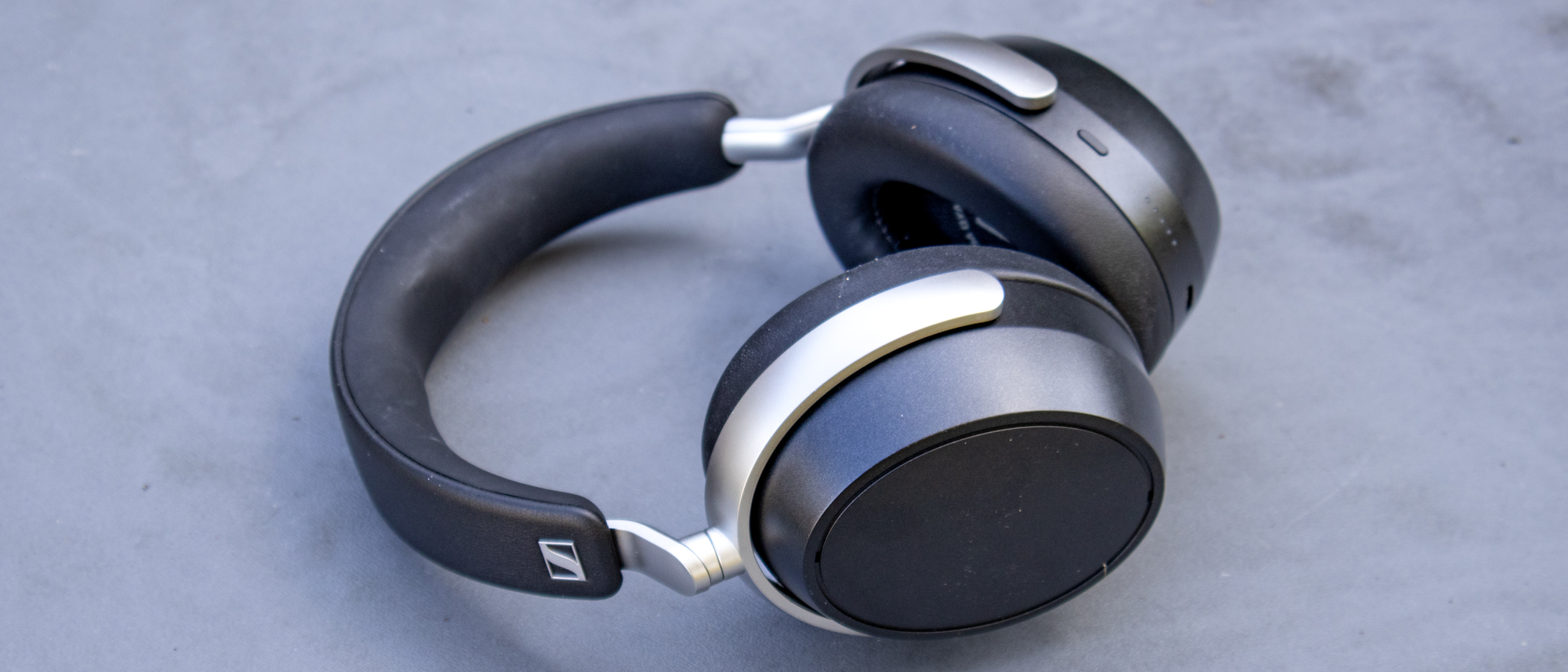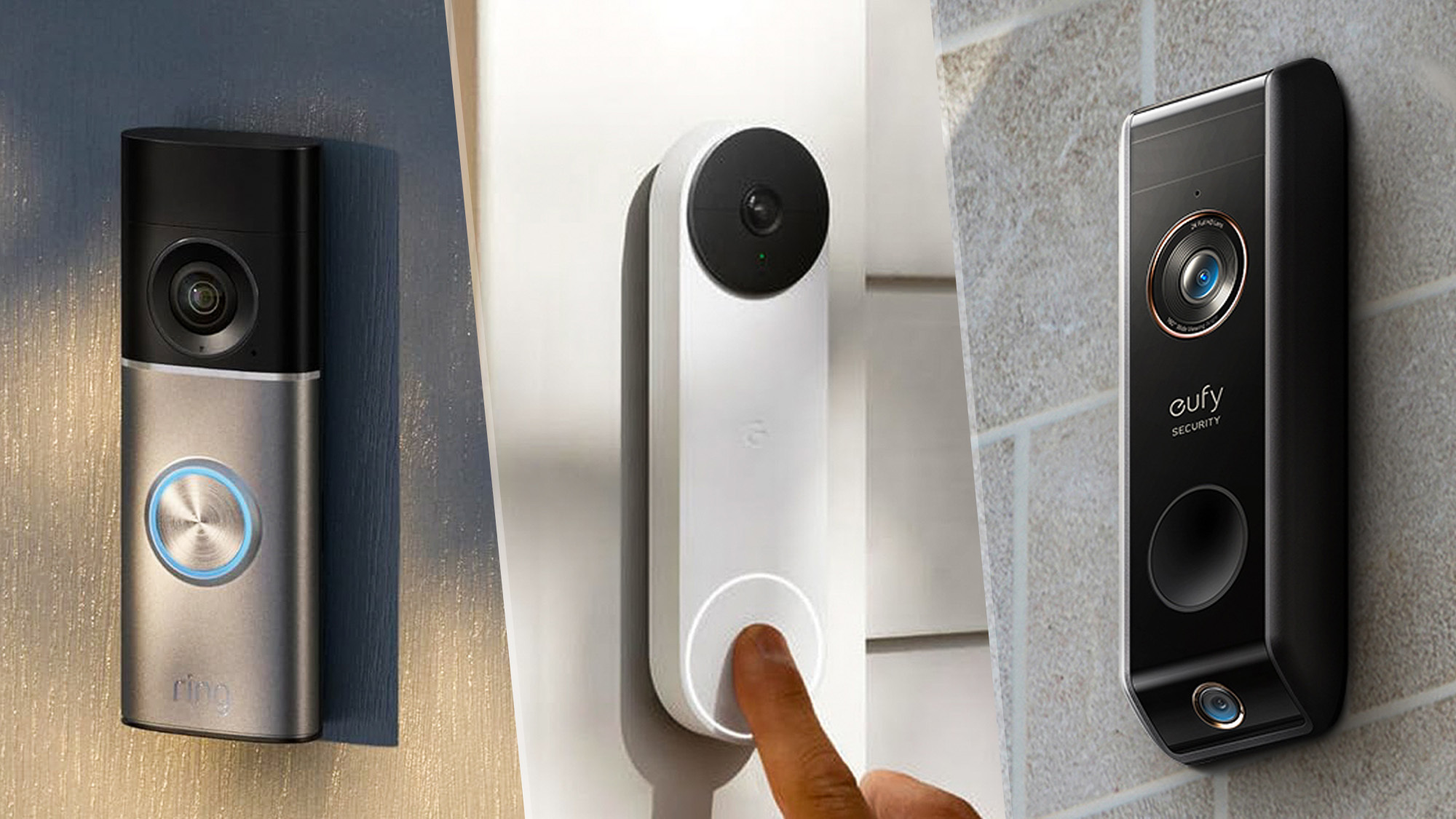Tom's Guide Verdict
There’s one focus for the HDB 630 — sound quality. The pursuit is absolute, with every feature dedicated to excellent sound. And sound good, they do indeed. The dongle is a welcome addition for audiophiles, and the sound, as a result, is epic. They’re comfortable, handsome, and the ANC is pretty good to boot. You have to spend many, many dollars for those features, however.
Pros
- +
Incredible, HiFi sound
- +
A very comfortable fit
- +
Top-notch protective case
- +
“The Dongle”
- +
Simple, minimalist style
Cons
- -
Rattly build
- -
Silicon headband picks up grease from across the room
- -
Inaccurate touch controls
Why you can trust Tom's Guide
You might think, if you’re at all interested in Sennheiser headphones, that this latest pair of wireless headphones from the brand are a direct sequel to the Momentum 4 ANC headphones. In fact, you’d be mistaken — the HDB 630 pull from the naming convention of the traditionally wired audiophile line of HD headphones. It’s all a part of a plan to make the whole Sennheiser line easier to deconstruct and navigate. I don’t mind it, and it will definitely make it easier to tell some of these wireless options apart.
So — the headphones. The HDB 630 are wireless headphones aimed squarely at Sennheiser’s traditionally wired audiophile customer. The brand wants to prove that you don’t need different pairs of headphones for home and travel listening, just one pair that’s really good at both. To that end, the HDB 630 feature a wireless dongle for higher-quality portable audio, and a cable for more dedicated “plug into something” critical listening.
How has Sennheiser done? Well, we’ve already given them their 4.5-star score, so the end result should be pretty obvious. They’re a supremely comfortable pair of headphones that bring epic sound and solid ANC to the table, along with some great audiophile features like the aforementioned USB-C dongle. They’re not cheap, though — around $50 more than the competition — so they’ve got their work cut out for them if they want to top our list of the best headphones.
Find out how they fare in my full review.
Sennheiser HDB 630: Cheat sheet
- What is it? Sennheiser’s new wireless headphones with ANC
- Who is it for? Audiophiles looking for an on-the-go audio fix
- What does it cost? $499/£399
- What do we like? Excellent sound, their comfortable fit, and the range of audiophile features
- What don’t we like? They're not cheap, and the touch controls are not great
Sennheiser HDB630: Specs
- Price $499/£399
- Connectivity Bluetooth 5.2
- ANC Yes
- Battery 60 hours (ANC on)
- Weight 0.68 pounds
- Dimensions 6.9 x 2.3 x 9.2 inches
- Colors Black
- Drivers 40mm
- Compatibility iOS, Android
- Frequency response 6Hz - 40kHz
Sennheiser HDB 630 review: Price and availability
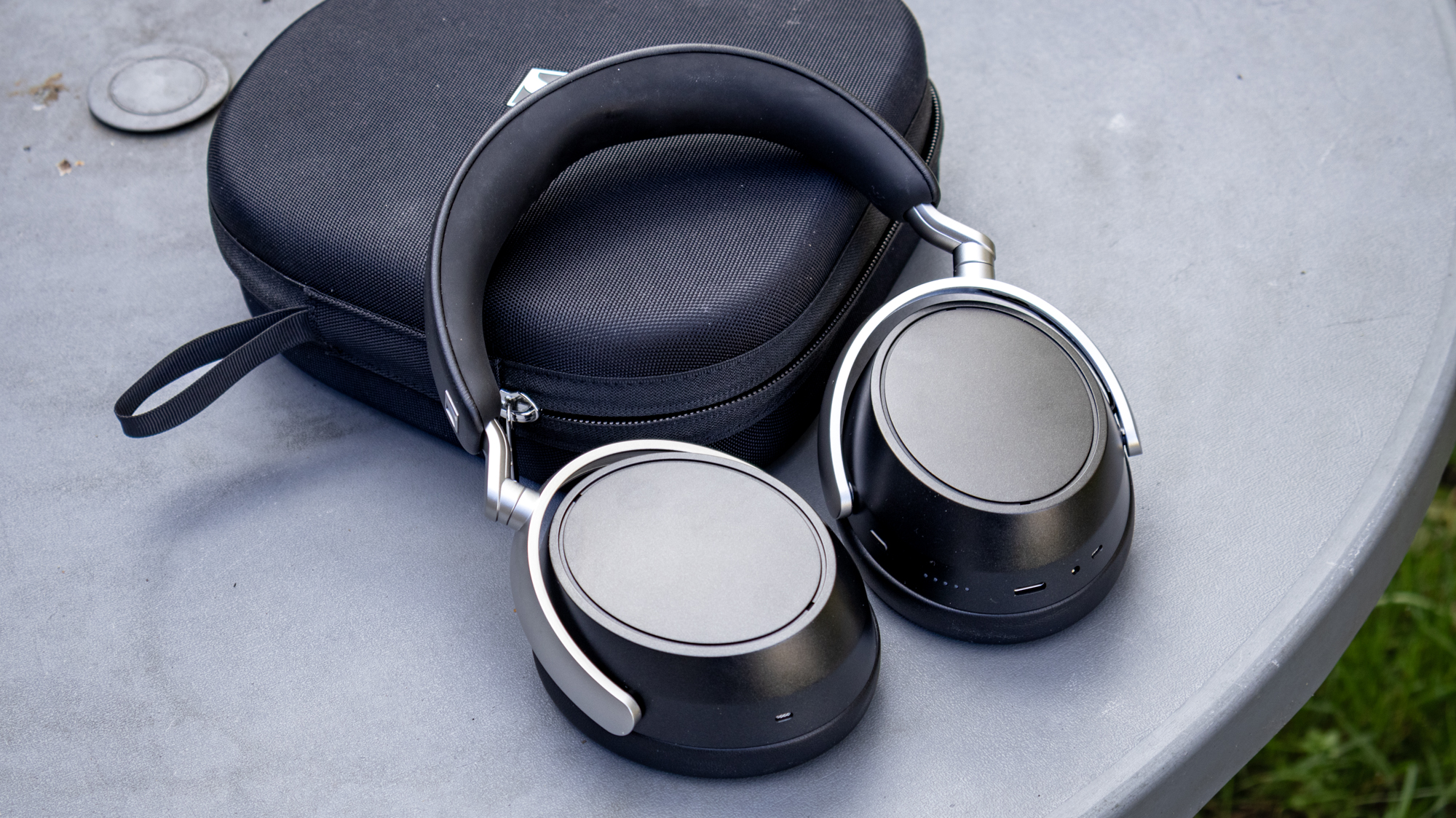
Look, I don’t like talking about tariffs and price rises in the U.S. as much as anyone, but they remain an issue if you’re looking to buy a pair of wireless headphones in 2025. The HDB 630 are a whole lot more expensive in the U.S. than they are in other territories, tipping the dollar scales at $499. That makes them more expensive than the Sennheiser Momentum 4, which these headphones replace.
It also makes them more expensive than their closest competitors. The Sony WH-1000XM6 are $50 cheaper, and the Bose QuietComfort Ultra Headphones Gen 2 are $40 less. Our current pick for the best headphones, the Bowers and Wilkins Px7 S3, also cost $50 less. That makes the job of the HDB 630 a whole lot harder — the competition is tough, and the price isn’t going to help them find an audience.
Buyers around the world, particularly Europe-bound customers, are going to have a far better time price-wise. In the U.K., for example, you’ll pay £399, making them around the same price as the competition. And you get some extra bonuses over those models too, like the USB dongle and excellent 60-hour battery life — a far more compelling buy.
Get instant access to breaking news, the hottest reviews, great deals and helpful tips.
You won’t have to worry about finding a pair, though — just head to Amazon, Best Buy, or the Sennheiser website to pick up a pair.
Sennheiser HDB 630 review: Build and design
- Handsome, simple headphones
- Incredible, if large, protective case
- Slightly rattly build
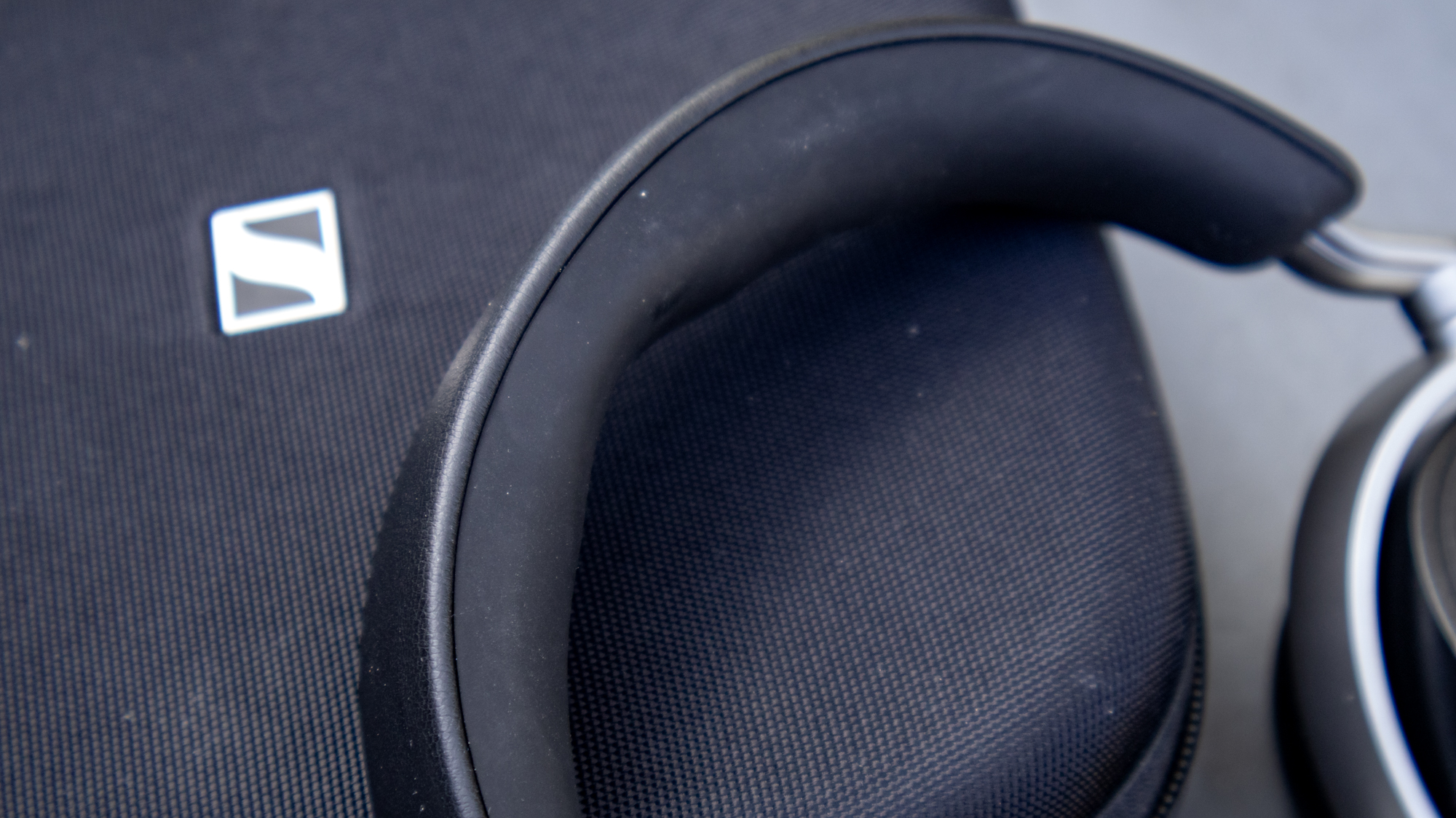
Sennheiser has a long history making headphones, so it's no great wonder that the HDB 630 don’t do anything to rock the design boat. They’re a handsome, if fairly unremarkable-looking pair of headphones. They’ve retained some design queues from the Momentum line, like the oval earcups and large touch surfaces. They’re not as colorful as those that have come before, with one color option — black — so those looking for a colorful pair of headphones might want to look elsewhere for their next pair of over-ears.
I like the silver accents, but I’m not such a fan of the silicon headband coating. While it aids in the comfort of the headphones, it also collects grease and grime from every corner of the room within a femtosecond. That makes it look… less than stellar. Thankfully, it’s going to spend most of its up against your scalp so most people aren’t going to see it, but it’s an aesthetic foible that scrapes off some of their premium luster.
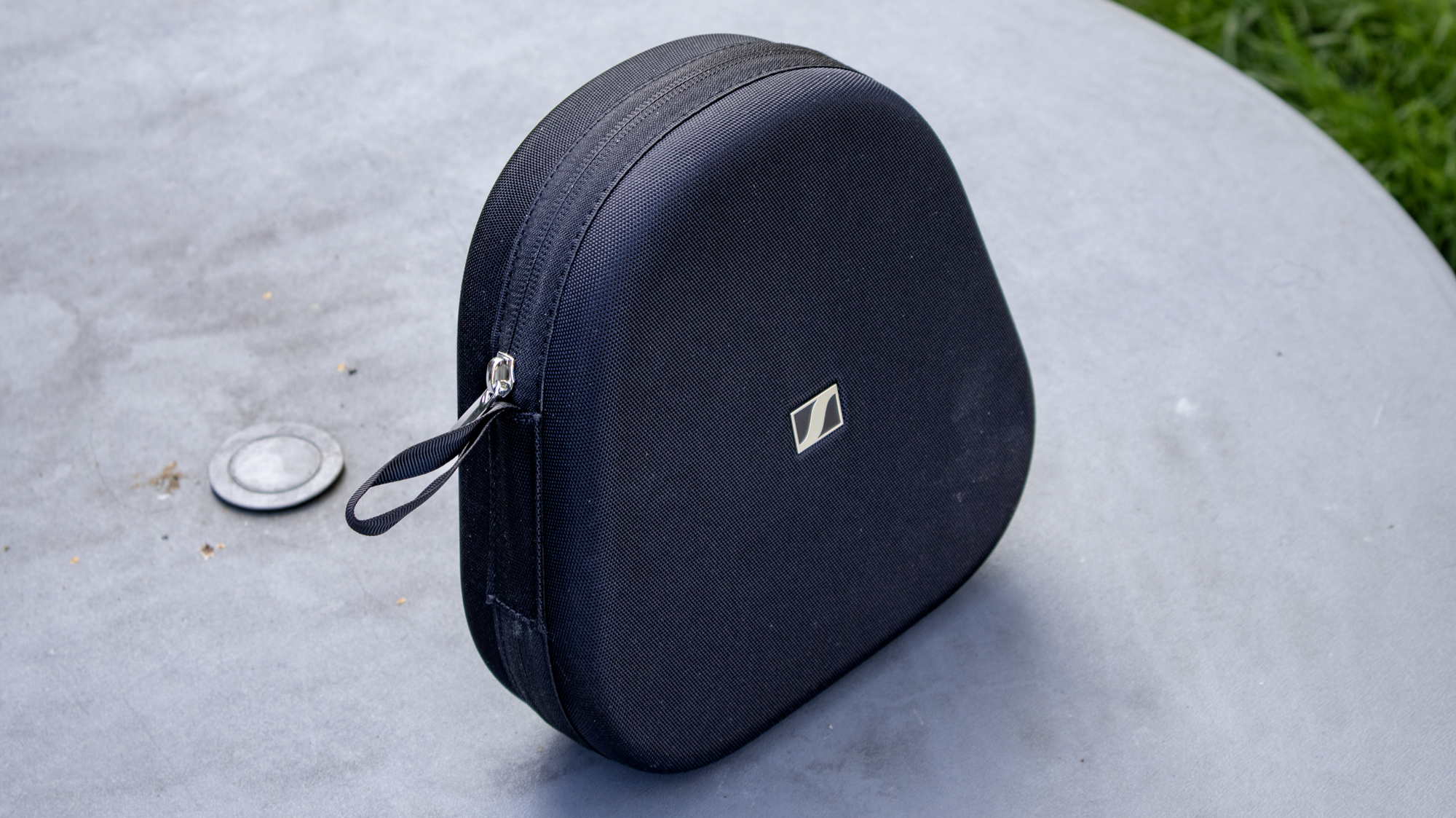
Another foible is the way that they’re built. To be perfectly clear, the build is still good. The plastics are nice, and everything feels sturdy. There is, however, some rattling when you pick the headphones up — more than you’d find with the competition. Considering their dollar price, it is slightly disappointing that they’re not rattle and creak free.
What’s not disappointing is the protective case — it’s about as good as they come. It’s slightly larger than the competition, but there’s space inside for the headphones to nestle down comfortably, and slots for all the cables and the all-important dongle. There’s even a small pocket that contains the manuals — although you can always pop some Jolly Ranchers in there. You know, for later.
Sennheiser HDB 630 review: Features
- No spatial audio
- Very customizable EQ, adaptive ANC, customizable controls…
- The Dongle
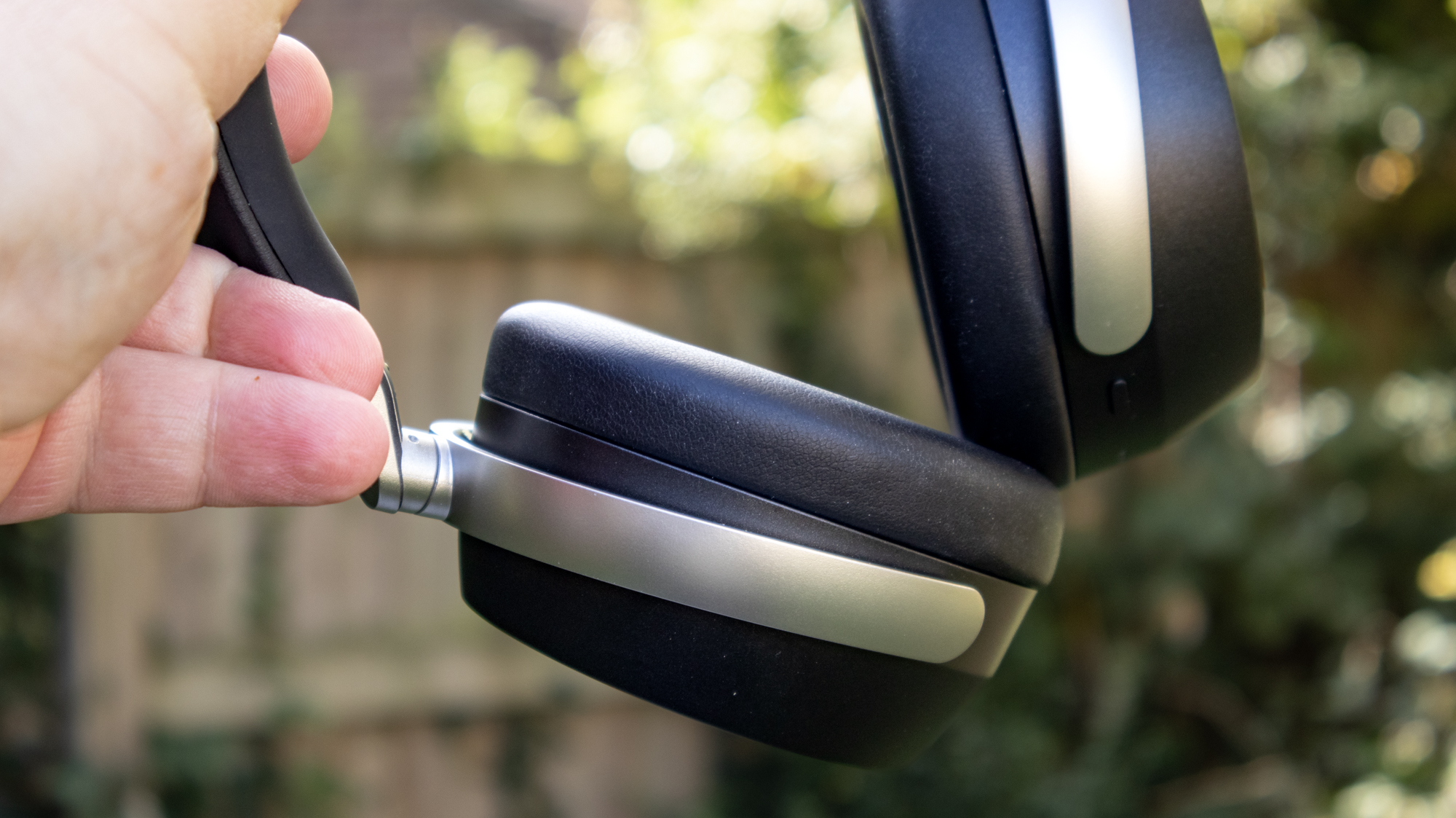
So, let’s start with what the HDB 630 don’t have — spatial audio. There’s no setting here that makes for a wider experience while artificially thinning out the sound. Oh no, such a great loss. No matter, the alternative here is much more up my street. It’s called “Crossfeed”, and it should be of interest to anyone who likes listening to their music over speakers.
Crossfeed blends the left and right channels to more closely emulate the kind of blending that happens with stereo speakers. After all, they’re placed much further away from your ears than headphones, and work better for older stereo and mono mixes. It works very well here, and in some cases can make for a more immersive listening experience. It’s not strictly “spatial audio,” but it does better place you in the music that you’re listening to. If you’re not a fan you can leave it off, or change it depending on different levels to increase and decrease the effect.
Beyond Crossfeed, there are other features on board the HDB 630. There’s a very useful, powerful, and intuitive EQ adjustment system, for example. There are levels here. You can choose between the expected presets, like Rock, Dance and Classical, but you can then dive in for more granular adjustment. Then there’s a parametric EQ for the real tuning nerds, along with a more standard EQ adjustment for those not ready to choose their own bands.
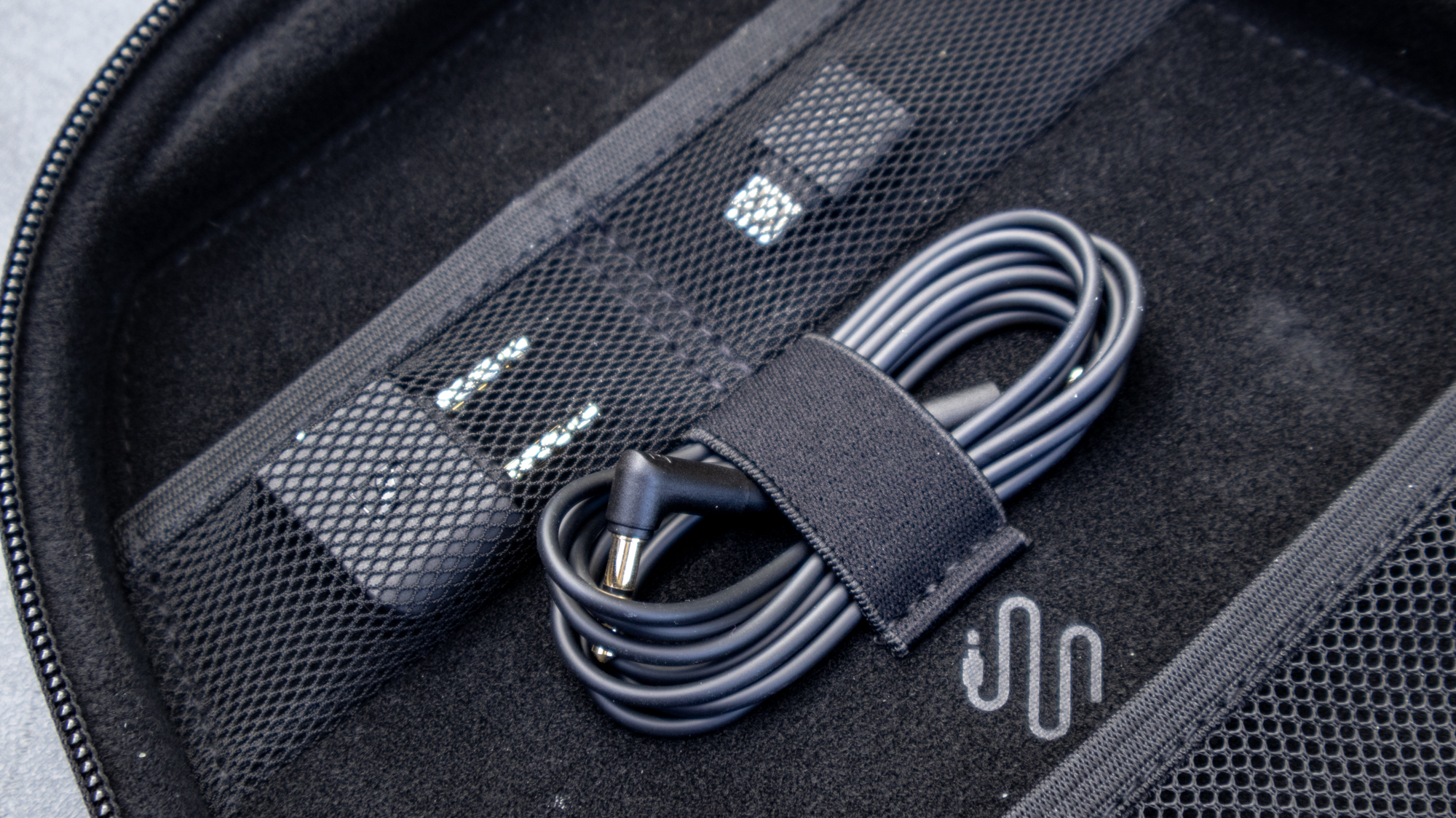
There’s the excellent Sennheiser app, which houses it all, where you’ll also find the adaptive ANC. You can set this to custom or adaptive — the latter will change depending on the noise of your surroundings, while the former is dictated by you, the listener.
I like using the custom setting and putting it “max” the entire time. Because when I actually want to block noise, I want to block all the noise. And when I don’t want to block noise, I’ll simply not wear my headphones.
Finally, there’s The Dongle. It’s actually called the BT 700, and it’s very clever indeed. See, the HDB 630 are designed to give you the best sound quality no matter what you’re plugged into — something that’s quite hard to do when you’re not using Aptx adaptive, or any other measure of high-quality codec.
Alas, not every handset supports high-quality codecs, so if you want the best quality over Bluetooth, you want something that can add them to your device. That’s what the BT 700 does — and it does it very well indeed. Music from my new iPhone 17 Pro Max has never sounded better.
Sennheiser HDB 630 review: Sound quality
- Supremely detailed
- Very spacious
- Some might want more bass
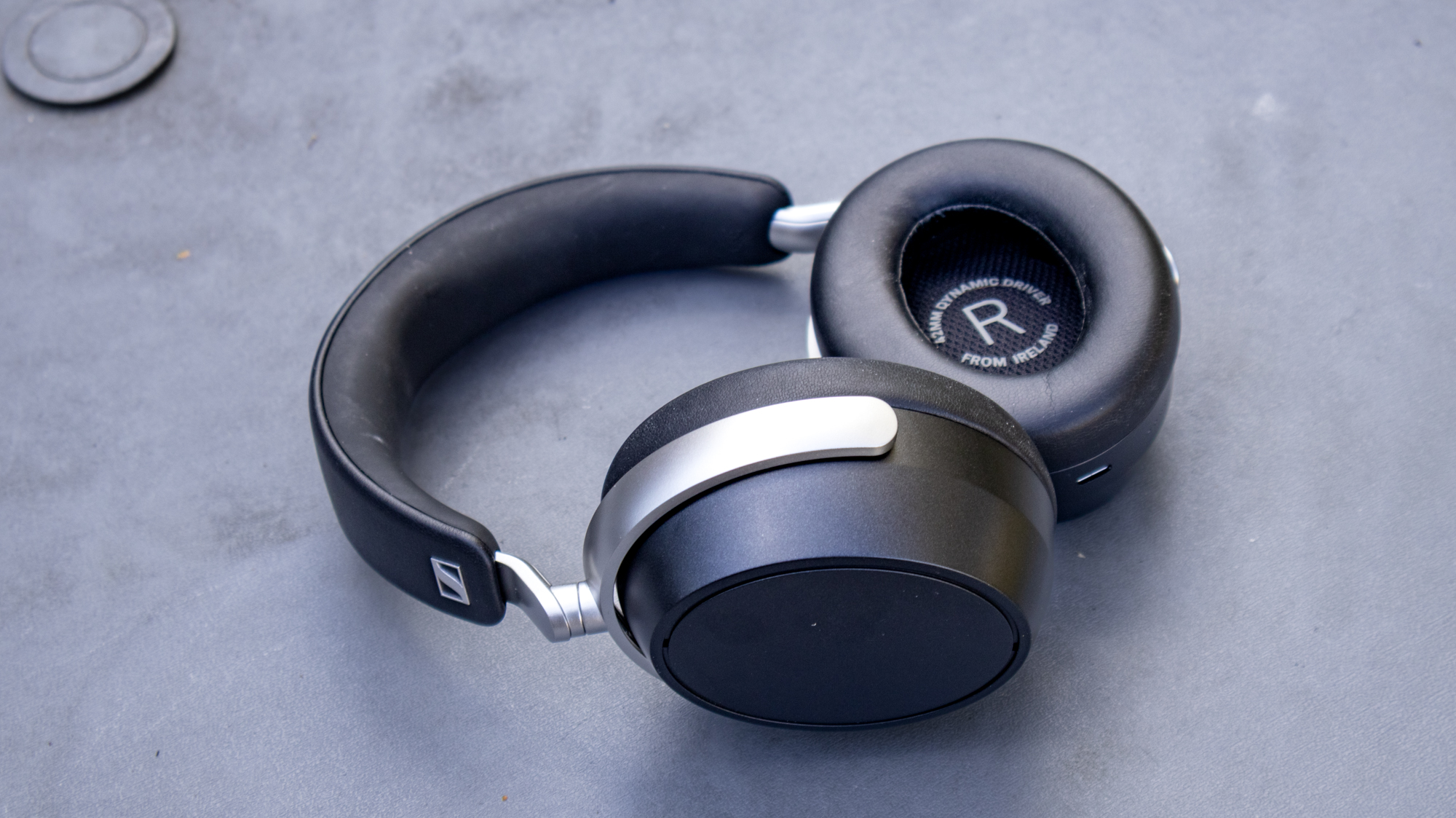
Thanks to a multitude of sound modes, there are plenty of ways to get audio that sounds epic out of the HDB 630. Use the BT 700 dongle, and you’ll get higher quality wireless listening, no matter the device you’re listening out of. Use the included USB-C cable and you’ll get even higher quality audio, with much better tracks than the wireless Bluetooth connection. You can even use the (also included) 3.5mm cable for more listening over a wire — your options are many.
I preferred the sound quality over a USB-C cable, plugged into my phone. I tested the HDB 630 using Qobuz, our pick for the best music streaming service for audiophiles, thanks to its incredible track quality. I found a nice, quiet corner, plugged in, and got started with my favorite tunes.
There’s one thing that’s immediately noticeable when listening with the HDB 630 — they’re capable of some truly excellent, revealing detail. There will be small and delicate parts of your music that you’ve never heard before over other models, even similarly priced options like the Sony WH-1000XM6 and the Bose QuietComfort Ultra Headphones. Things like cowbells in older tracks, shuffling musicians in orchestras, and the edge to acoustic guitars.
The rest of the soundscape is equally excellent. While the bass takes a slight backseat to the rest of the ensemble, it’s immaculately well controlled, dynamic, and gets very, very low. Bass volume might not please the bassheads, but it’s a far more engaging presentation than some of the more heavyweight options out there. Mids are warm and wide, with some great attention paid to vocals and other mid-weighted sections. The highs are bright and clear, without being too piercing. All together excellent presentation, and far more engaging than the lazier, bassier presentation of their key rivals.
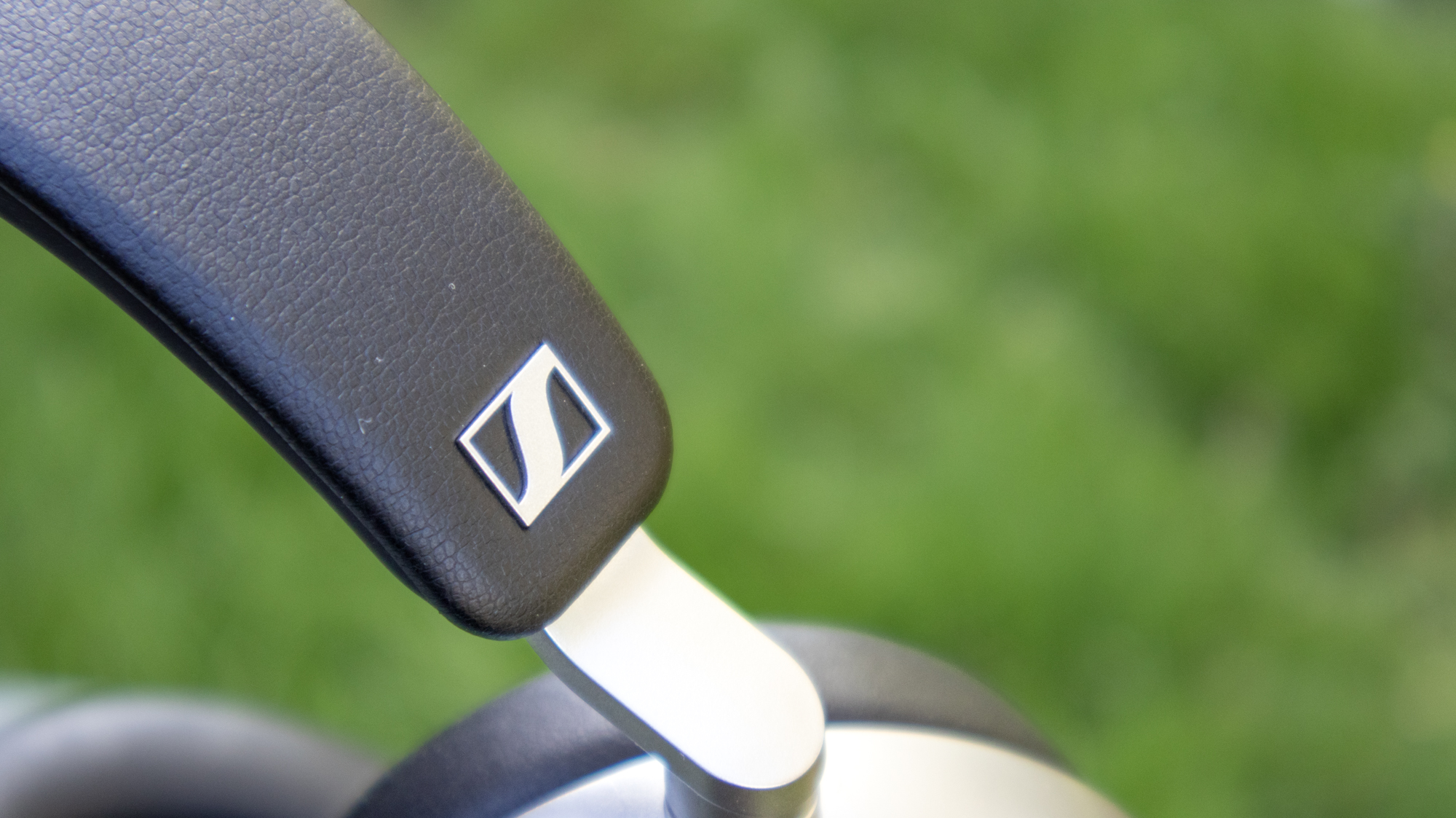
Whip up Satyricon’s Phoenix and you’ll find a cold, uncompromising piece of modern black metal. The bass stands out, strangely enough, thanks to its clarity and depth. Then the distorted guitar picks up, and the track gains its webbed wings. The vocals are a particular strength, and they’re placed very well in the mix. It’s not the widest track around, so the headphones don’t get to stretch their legs there, but the instrument separation and placement are very good.
To really test out just how well they can pump out the low stuff, I turned to drum and bass heroes Chase & Status and Becky Hill for Disconnect. Again, the bass is extremely well controlled, never becoming too much or making things shake. It’s dynamic, changing and weaving its way around Hill’s clear vocal line and the constant ebb and flow of the drum beat. The synths are well represented, and the whole track fills the space made by the headphones well. Not the lowest — real DnB heads might be left wishing for more down low — but it’s an engaging, fun experience nonetheless.
Ushering us into a smoky room, the jazzy stylings of Alfa Mists’ Last Card (Bumper Cars) bring the mood down a bit and seat you in a comfy leather chair. The spoken word that commences the track is clear, like someone is in the room with you, and the slowly building brass and string ensemble chills you out for the saxophonist to bring some extra dimension. Instrument separation really is king here, each member of the group easily picked out amongst the rest of the sound. The voice comes back, and the groove begins. The bass is quick and well-formed, and doesn’t take anything away from the rest of the track. The soundstage is top notch, placing you well in amongst the band as they play.
- Listen along to the Tom’s Guide testing team with the Sennheiser HDB 630 testing playlist on Qobuz:
Sennheiser HDB 630 review: Controls
- Touch controls
- Innacurate
- Not their finest hour
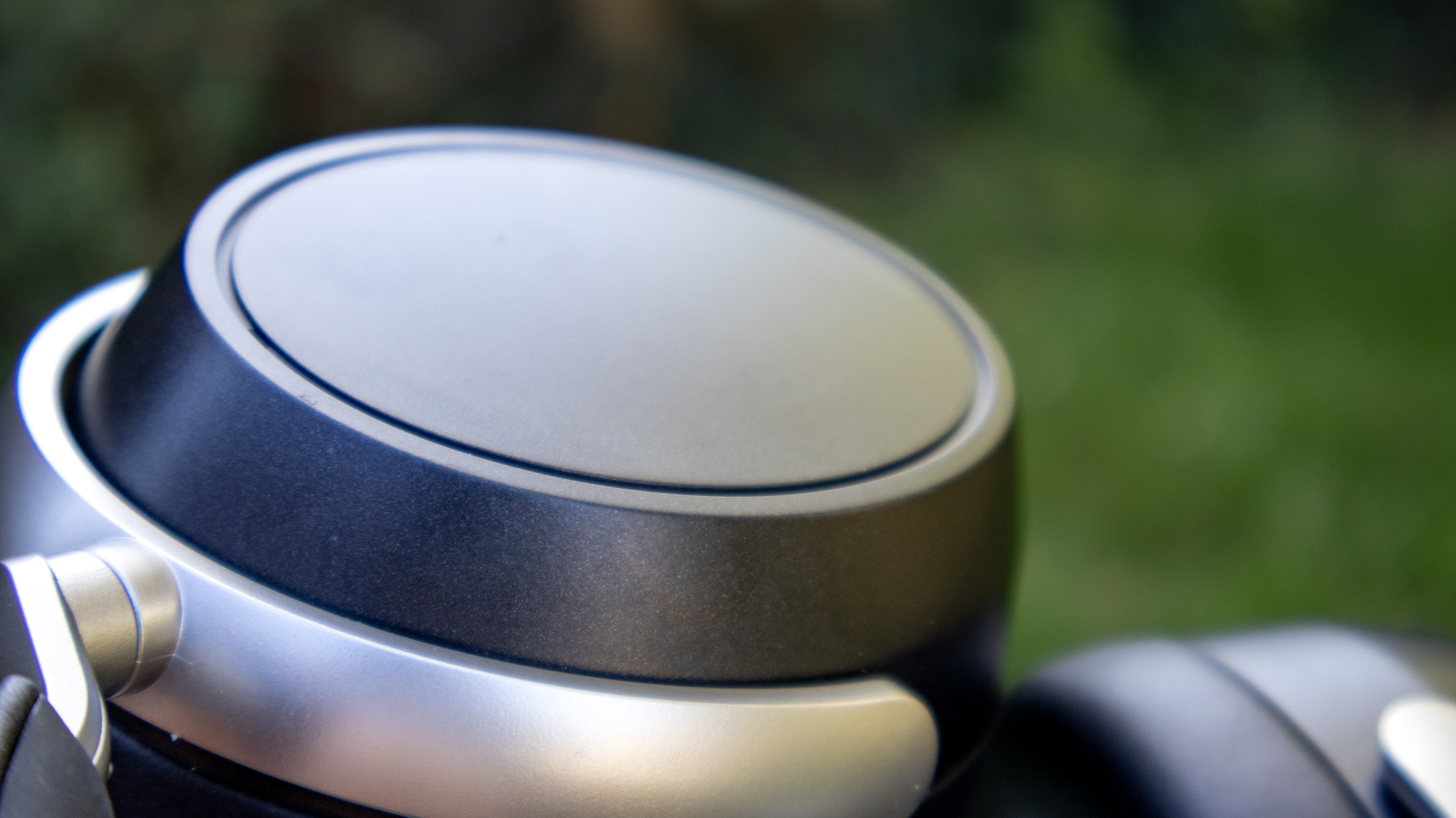
Touch controls are never my favorite way to control headphones, and the HCB 630 simply confirm my reservations around the format. They’re not the worst I’ve ever used, but they are not as good as Sony’s options. I found myself pulling my phone out of my pocket more often than not to control playback, as I became ever more frustrated with the inaccuracies of the touch controls.
They are extensive, that’s for sure. You can play/pause with a tap, skip with a swipe left or right, and change the volume with a swipe up and down. They work mostly ok. The real problem comes into clearer view with the ANC controls. Rather than a holding gesture, you have to pinch in and out to adjust the level of ANC and transparency. It straight up doesn’t work.
It’s about as frustrating as touch controls on a pair of headphones can be. Frequently, I ended up playing and skipping when I wanted to adjust ANC. In the end, I found it much easier to either 1) take the headphones off altogether, or 2) pause my music on my phone. The standard playback controls are fine, but the ANC controls are dreadful.
Sennheiser HDB 630 review: ANC
- Solid noise blocking
- Bose is still better
- Nice, granular adjustment
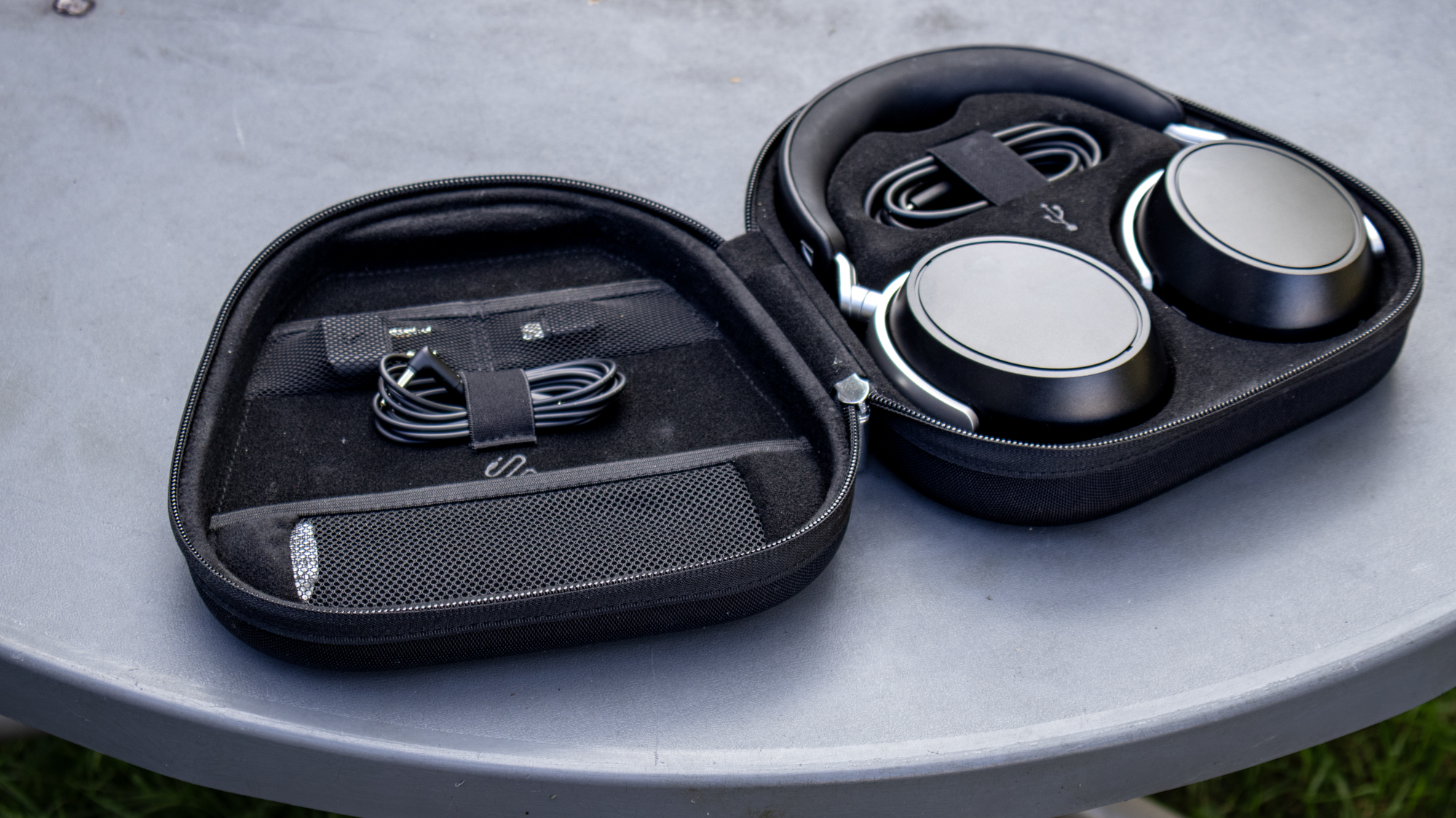
Sennheiser’s noise canceling has always been very good — although, as always, Bose’s noise blocking manages to pull out ahead. It is slightly less of a lead this time around, with both the Sony and these Sennheisers getting much closer than they have before, but the best noise-canceling headphones won’t be moving from the top of the list just yet.
Still, the Sennheiser ANC here is excellent. It does a stellar job of keeping out the noise of traffic when walking down a road, engine noises while riding the bus and noisy train cars. Office dwellers will love how it can silence irritating conversations and keep the sound of air conditioning units at bay. It’s very good indeed, only being beaten by the Bose in the very top end — my keyboard can occasionally make its way through, while the Bose keep it lovely and silent.
Transparency mode is good, and can be dialled in gradually for different levels of sound. It sounds natural, and works well for those moments you need to hear the world without taking your headphones off. There’s no “palm over the touch panel” gesture for quick conversations à la Sony WH-series, but double-tap the right earcup and the music pauses and transparency mode activates.
Sennheiser HDB 630 review: Call quality
- Good microphones
- Excellent call quality
- Above average overall
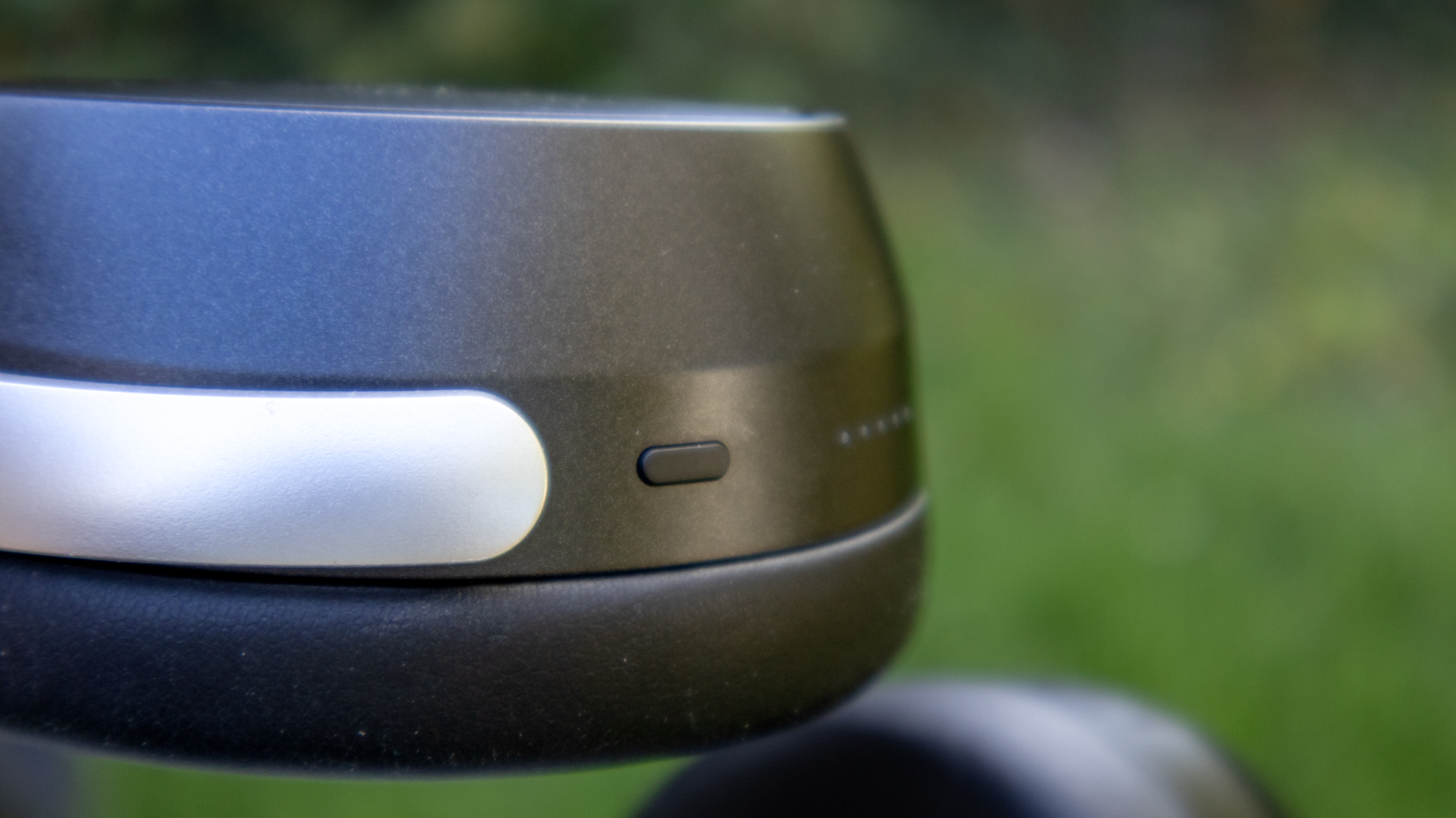
Call quality is very good, thanks to some top-notch microphones inside the headphones. I tested the quality in a few scenarios, including a quick call to my sister, a work video call, and a call in a busier environment to a friend. The headphones handled the busy road I walked past very well, making sure that my call partner was able to hear everything that I had to tell them. The quality of my voice was reported to be excellent, with no problem hearing what I had to say (whether they liked it or not).
Call quality on my end was equally excellent, with great vocal quality from my call partner. The HDB 630 aren’t just going to be great for normal calling to parents, friends and loved ones, but they’ll do a stellar job for more professional applications as well. I’d say, in fact, that they’re better than Bose for calls, and as good as Sony’s effort.
One thing to note — don’t call people while you’re using the BT 700 dongle. It has an annoying habit of making calls sound outright awful, for some reason. You’re much better off using the standard Bluetooth connection. No great loss, but a shame nonetheless.
Sennheiser HDB 630 review: Battery life
- 60 hours ANC on
- It does drop with high-quality codecs
- Good quick charge
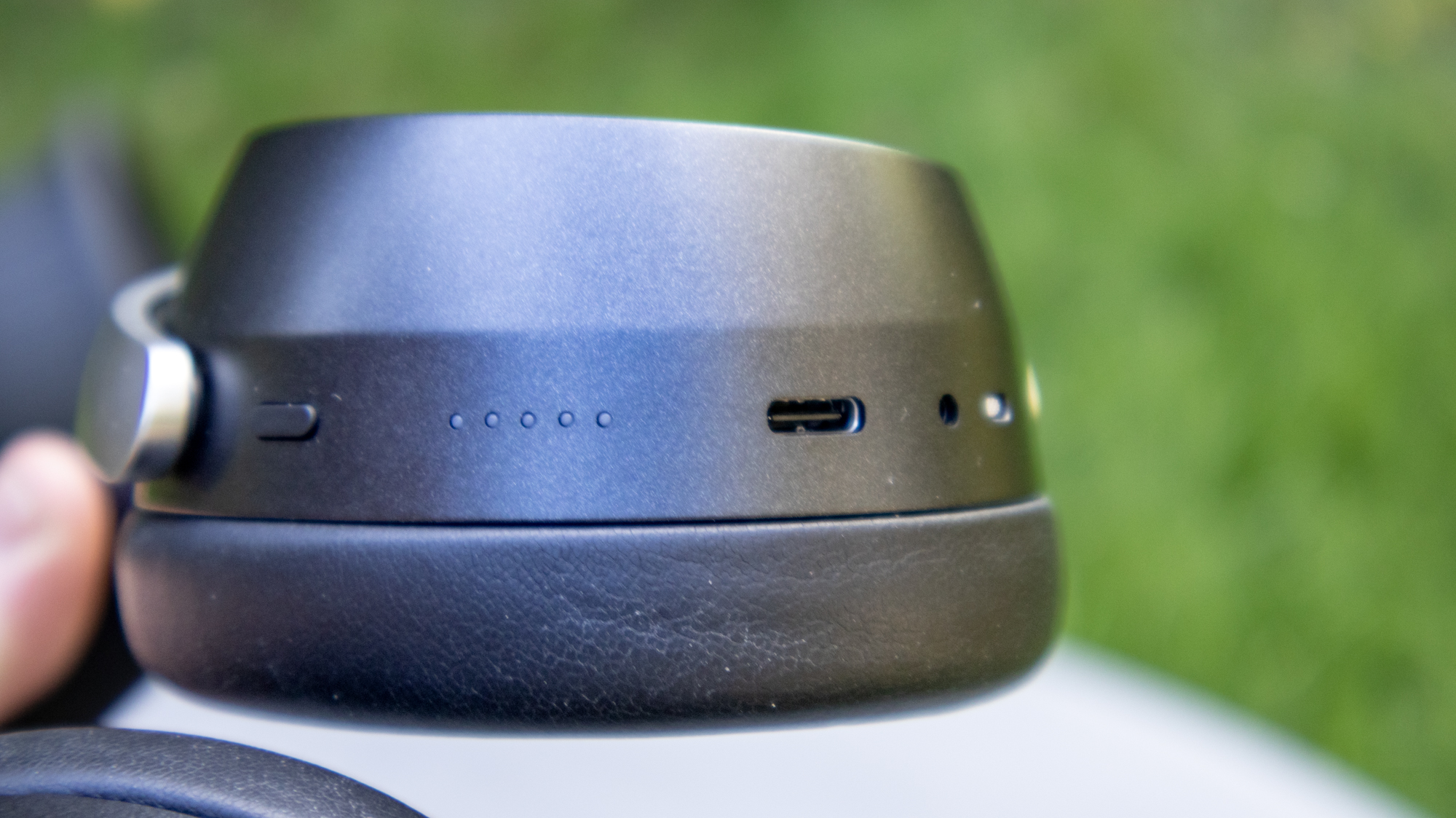
Battery life has long been a strength of Sennheiser, and the HDB630 excel as well. With ANC on, they’ll last for a very tasty 60 hours according to the specs sheet. That's double both the Sony and Bose competition, and triple that of the AirPods Max — a pair of headphones that costs $50 more. There are headphones that last slightly longer, like the Marshall Monitor III and their 70-hour battery life, but this figure remains one of the best in class.
Something to remember, though. Use the high-quality codecs and the BT 700 dongle, and you’ll notice they slurp their battery rather than sip it, thanks to the more energy-intensive listening. Still, you’ll find 40 hours (or so) of battery life should you want to use them to their fullest, which is still excellent.
Testing the battery showed that the headphones mostly matched up those lofty figures fed to us by Sennheiser. Listening to the headphones without the dongle with standard codecs at mid volume used about 13% of the battery over the course of my 7 and a half hour workday. Using the dongle and upping the musical fidelity increased that figure to about 20%, although I was listening to some seriously high-quality stuff.
Quick charge is here as well, should you run out of battery too quickly. With a 10-minute charge, you’ll get 7 hours of battery life — plenty to get you through your day.
Sennheiser HDB 630 review: Verdict
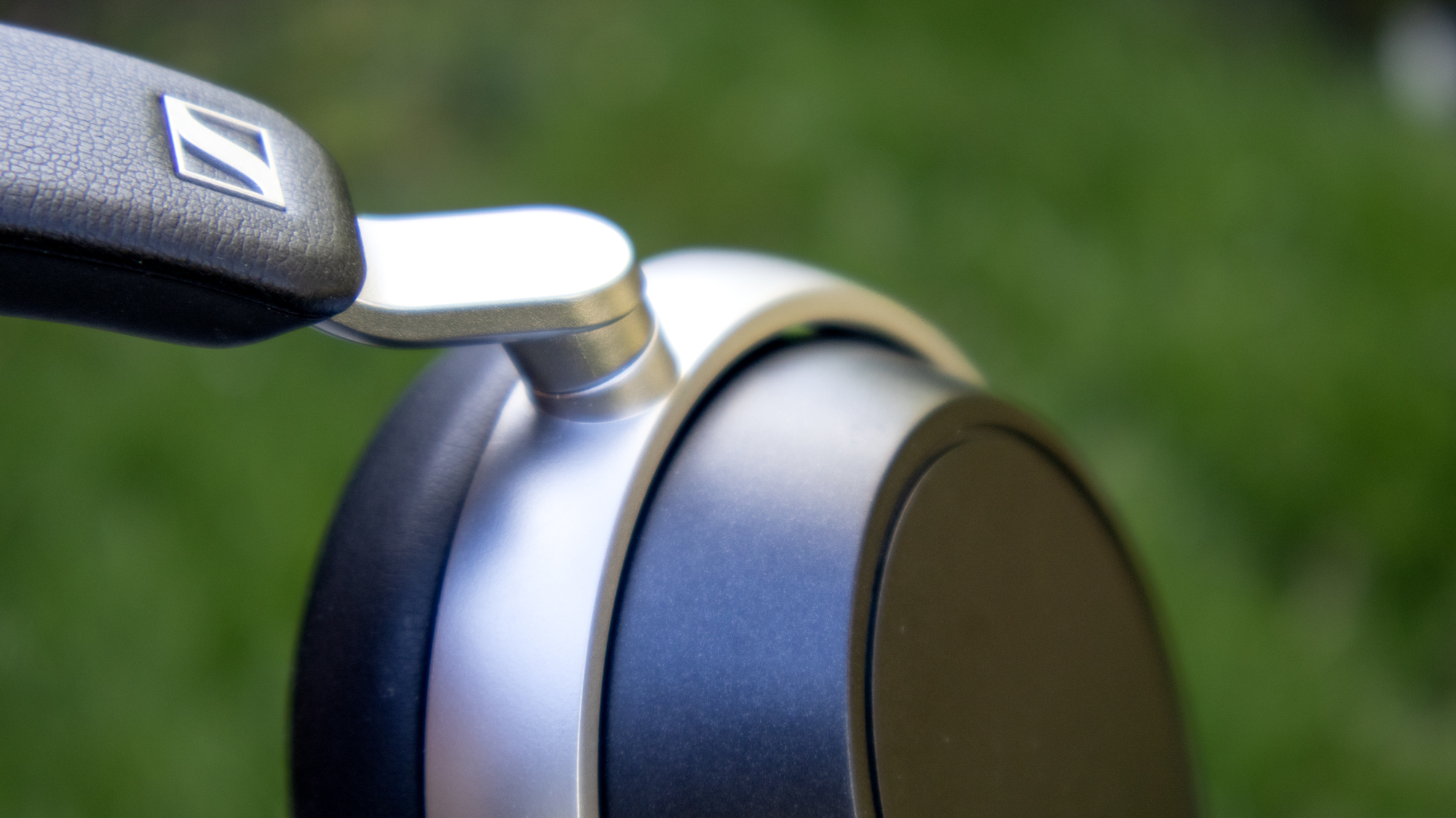
The HDB 630 are an excellent pair of headphones — there’s no two ways around it. They sound spectacular, and they can be dialled in better than any other pair of wireless headphones I’ve ever tested, thanks to their extensive parametric EQ settings.
The ANC, while not quite up there with the very best, is still excellent, and the transparency mode equals its rivals. The battery life is game-changing, the app is useful, and the comfort is very good indeed. They’re a shoe-in for our best headphones list — but they’re not quite list-topping.
The touch controls aren’t the best, and the build isn’t quite as good as some of the competition. They only lose half a star, however — and if you’re an audiophile looking for your next pair of headphones, these might just be the pair you should add to your shopping basket.

Tammy and her generous collection of headphones have found a new home — Tom's Guide! After a two-and-a-half-year stint as iMore's resident audiophile, Tammy's reviews and buying guide expertise have more focus than ever on Tom's Guide, helping buyers find the audio gear that works best for them. Tammy has worked with some of the most desirable audio brands on the planet in her time writing about headphones, speakers, and more, bringing a consumer focussed approach to critique and buying advice. Away from her desk, you'll probably find her in the countryside writing (extremely bad) poetry, or putting her screenwriting Masters to good use creating screenplays that'll never see the light of day.
You must confirm your public display name before commenting
Please logout and then login again, you will then be prompted to enter your display name.
